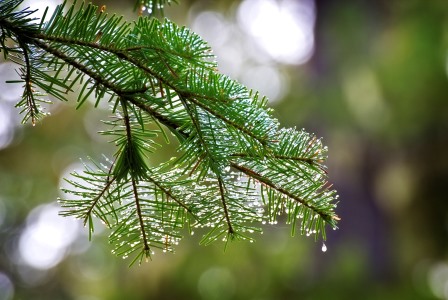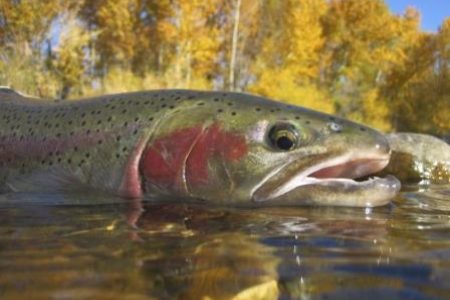LANDSCAPE HEALTH SUBCOMMITTEE
Focused on Vegetation Management Projects for the Clearwater Basin
Landscape Health is primarily focused on project level collaboration on vegetation management projects on the forest. The committee endeavors to focus its limited capacity on projects or issues that may be more controversial or out of the ordinary, in order to provide guidance with the most utility to the decision maker to arrive at a consensus that best finds balance among diverse stakeholder interests.
The committee tries to maintain a close relationship with Rangers and IDT project leaders so that we have an understanding of the program of work on each Ranger District and within the three zones on the forest. From this knowledge the subcommittee can identify projects or issues that it might wish to dive deeper into and provide as much comment to the agency as possible to aid the agency in arriving at a decision the CBC can support. The subcommittee may try to be on the record for the majority of vegetation management decisions on the forest so that the CBC has standing to support the forest in a meaningful way if faced with an objection or litigation. The subcommittee may make field trips to a subset of important projects or at least have in depth discussion for priority projects using agency expertise presentation of project detail and mapping.
A top priority would be to find compromise or resolution for any disagreement within the CBC at the project level. If none exists, it is a priority to be on record supporting the forests decisions or making recommendations to the agency for preferred direction for pending decisions. The subcommittee has engaged in a long list of projects over the past decade. Some projects have a very high level of engagement such as the CFLRP project area, or more limited engagement on many others
CFLRP
The Clearwater Basin Collaborative, Nez Perce and Clearwater National Forests, and other partners have produced a comprehensive restoration strategy which was submitted for funding through the Collaborative Forest Landscape Restoration Program. The proposal is a science-based approach designed to restore and maintain ecological conditions within the 1.4-million-acre Selway-Middle Fork ecosystem in Idaho.
The Selway-Middle Fork area was selected because the needs are great. The area is identified as a top priority for restoration in national, regional, state and county plans and a forest sub Basin assessment. When funded, critical restoration work begins immediately. Mechanical fuel reduction treatments, road decommissioning, weed treatments, landscape burns and culvert replacements are already planned, approved and in process in accordance with National Environmental Policy Act procedures.
Accomplishments and Work Completed to Date:
Restoration activities benefit both the land and local communities, providing job and contracting opportunities in an area that has been hard hit by the downturn in the woods products industry. The Selway-Middle Fork plan signifies a change in the way business is conducted in the Basin. It marks a departure from traditional public involvement processes to collaboration, paving the way for a new era of cooperation. It has been a widely successful plan. Even with falling short on timber sales many come to study the success on the Selway-Middle Fork



The Area
The Selway-Middle Fork area is massive —1.4 million acres, the majority of which are national forest system lands. The area is nationally renowned for its pristine water, anadromous and resident fisheries, big-game species and scenic vistas. Included within the proposal area is the Selway-Bitterroot Wilderness, one of the first to be designated under the Wilderness Act of 1964, and one of the largest in the lower 48. The area boasts the Middle Fork Clearwater Wild and Scenic Rivers system, and the O’Hara Research Natural Area, one of the largest Research Natural Areas in the country.
The area has a rich fire history including the first deployment of a smoke-jumper and the first Wilderness fire management program. Vegetation ranges from remnants of coastal species to dry Ponderosa pine forests. While some of the land has been intensely managed, there are large tracts of unmanaged, “wild” lands. Past management, fire suppression, the invasion of exotic species and increasing human settlement in the wildland urban interface have altered the landscape and threaten the unique ecological values of the area.
The Proposal
- Apply prescribed fire and mechanical treatments on the landscape in a way that emulates natural patterns.
- Reduce fuels in the wildland urban interface.
- Allow natural fire to restore the landscape where appropriate.
- Improve and maintain forest composition and structure.
- Improve wildlife habitat across summer, winter and transitional ranges.
- Improve road drainage, decommission problem or unnecessary roads and replace
- Treat noxious weeds and restore native vegetation.
- Create jobs and promote emerging technologies such as biomass facilities.
For more information regarding the CFLRP proposal: https://www.nationalforests.org/collaboration-resources/learning-topics/collaborative-forest-landscape-restoration-program-cflrp/cflrp-projects
The Benefits
Proposed management activities have:
- Reduced the of risk of high severity fire, especially in the wildland urban interface.
- Since 2010 the Selway-Middle Fork Project has treated a cumulative footprint of over 240,000 acres. Wildlife habitat has directly benefited from these treatments.
- Minimized the potential scale and severity of wildfire, reducing firefighting costs.
- Promoted vegetation that is resilient to insects, disease and wildfire.
- Improved water quality.
- Improved conditions for big game species by stimulating growth of forage and promoting wildlife security.
- Improved conditions for fish by improving passage and connectivity.
- Reduced/eliminated non-native species and promote the growth of native species.
- Enhanced recreation opportunities for those who fish, hunt or view wildlife.
- Promoted opportunities for emerging technologies such as biomass facilities.
- Improved trust between the Forest Service, the Collaborative, partners and others with an interest in Forest management.
- Created and/or maintained more than 1,000 full- and part-time jobs through the ten-year plan.

